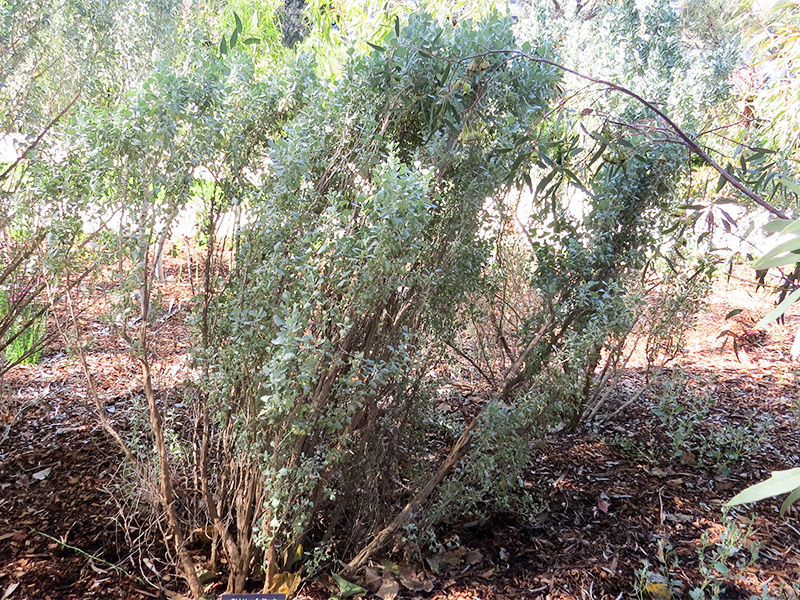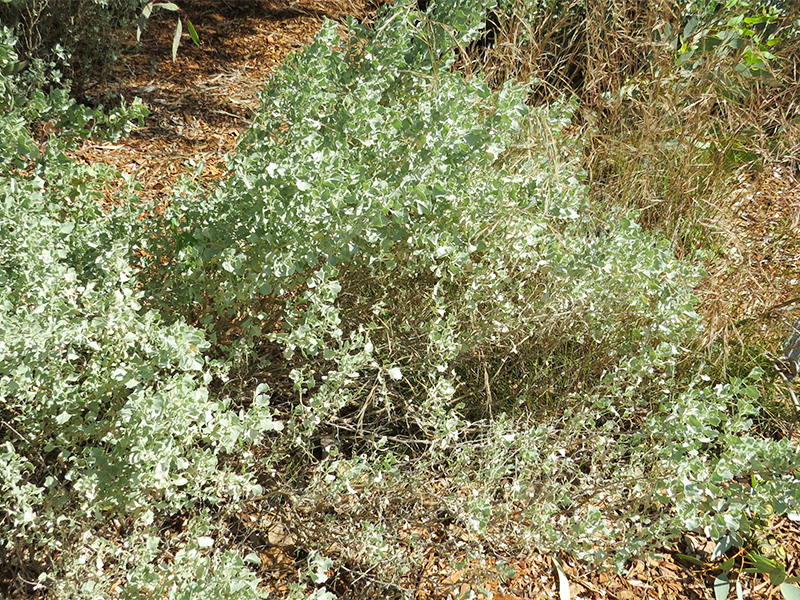
Woody > Atriplex > Atriplex nummularia > Atriplex nummularia
Atriplex nummularia
Giant Saltbush, Old Man Saltbush
| Family |
| Amaranthaceae |
| Genus |
| Atriplex |
| Species |
| nummularia |
| Category |
| Woody |
| Type |
| Shrub (evergreen) |
| Temperature (°C) |
| -5 - 37 |
| Height |
| 3 m |
| Spread |
| 4 m |
Photographs
Description and Growing Information
Flowering Period
| Landscape |
| Windbreak, screen, hedge and shelter-belt plant. |
| Cultivation |
| Moist soil wth a pH of 6.5 - 7.5. Prefers saline and clay soils. |
| Shape |
| Widespread. |
| Growth |
| Fast |
| Habitat |
| Limestone plains and woodlands. |
| Bark/Stem Description |
| Twigs are striated. |
| Leaf Description |
| Alternate with a short petiole, obovate, about 30 - 65 mm long/wide and has a cuneate base. The leaf margins are sinuate-dentate while the leaf apex is obtuse to rounded. |
| Flower Description |
| Small flowers which are wind pollinated. Male and female flowers occur on separate plants. Female flowers are dense in clusters along panicles about 20 cm long. Male flowers are disjunct globules at the end of branches. |
| Fruit Description |
| The fruit are sessile, reticulate veined and rhombic to orbiculate in shape. They are 5 - 12 mm wide and 5 - 11 mm long, thick and cork-like with a subentire to coarsely few-toothed margin. The seed is about 2 mm wide. Bracteoles are attached at the base, are 1 cm wide and fan-shaped. |
| Colour Description |
| The leaves are a greyish-silver colour. The seed is brown in colour. |
| Texture Description |
| The leaves have a scaly coating. The fruit is papery in texture. |
| Propagation |
| Seeds, rinse seeds in clean water prior to sowing. Germination should occur in about 6 days at 25°C. Cutting can be placed into a mixture of sand and potting mix with plenty of ventilation. |
| Ethnobotanical Uses (Disclaimer) |
| Commonly us as a livestock fodder through both natural and planned grazing. The wood is considered suitable for local crafts and the bark has a high tannin content. Seeds of Atriplex are consumed by the Aboriginal people of Australia. |

